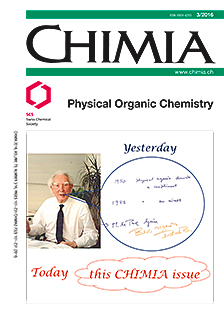Cooperative Photoredox and Asymmetric Catalysis
DOI:
https://doi.org/10.2533/chimia.2016.186Keywords:
Asymmetric catalysis, Electron transfer, Electron transfer catalysis, Photoredox catalysis, Visible lightAbstract
Chemical processes combining visible-light-activated redox catalysis with asymmetric catalysis are reviewed, including enamine catalysis in the presence or absence of an additional photoredox sensitizer, phase transfer catalysis exploiting an in situ -generated electron donor–acceptor complex, photosensitized chiral Lewis acid catalysis, and photoactivated nickel-catalyzed asymmetric cross-couplings. The transfer of a single electron leads to intermediate radical ions, whose strongly modulated reactivities can be exploited for asymmetric catalysis in a novel fashion. All processes discussed here are redox neutral so that the electron serves as a real catalyst which cooperates with an asymmetric catalyst for the overall asymmetric transformation.Downloads
Published
2016-03-30
Issue
Section
Scientific Articles
License
Copyright (c) 2016 Swiss Chemical Society

This work is licensed under a Creative Commons Attribution-NonCommercial 4.0 International License.
How to Cite
[1]
H. Huo, E. Meggersa, Chimia 2016, 70, 186, DOI: 10.2533/chimia.2016.186.







